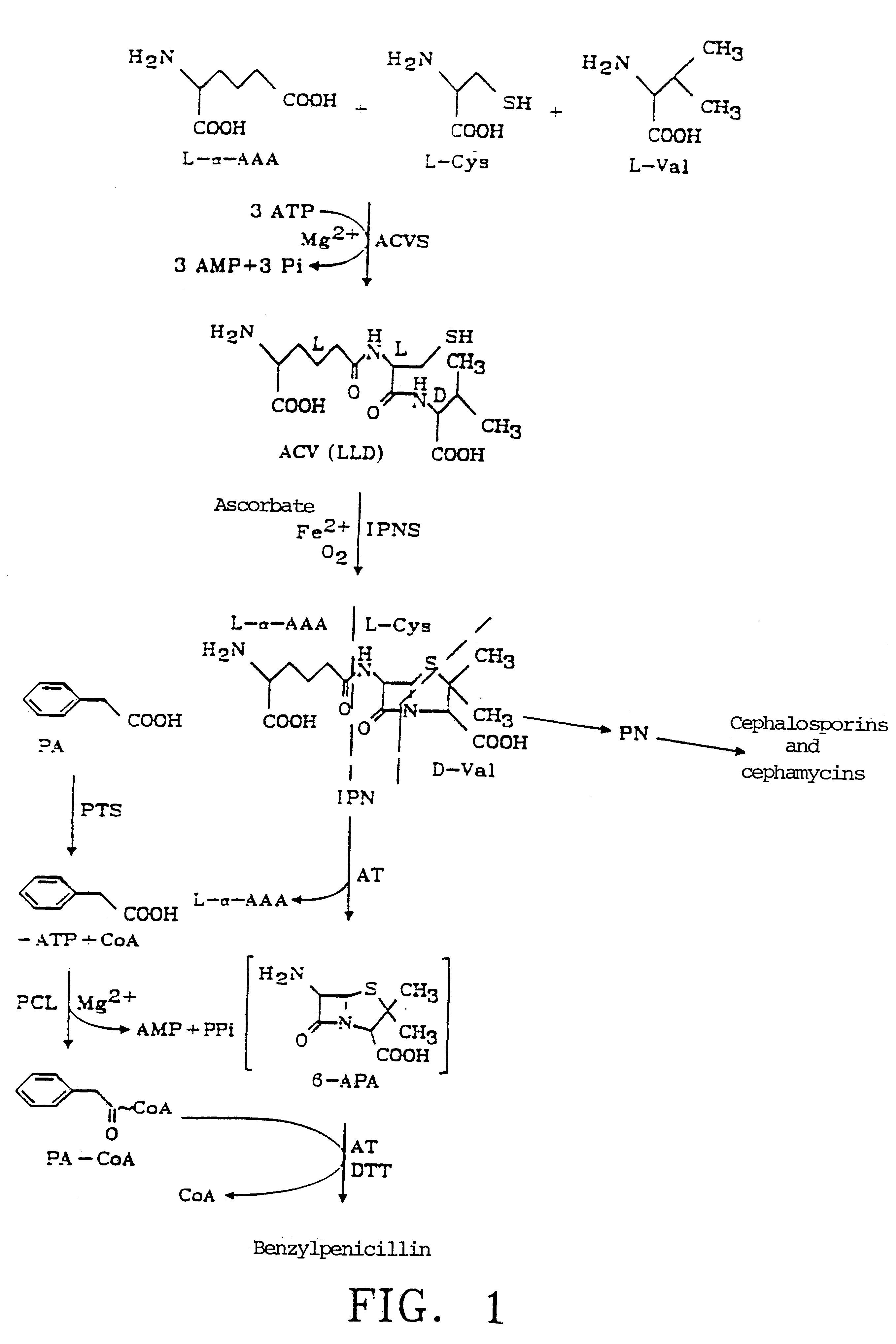Process for increasing the production of penicillin G (benzylpenicillin) in Penicillium chrysogenum by expression of the PCL gene
a technology which is applied in the field of process for increasing the production of pcl and penicillin in penicillium chrysogenum, can solve the problems of poor potency of pcl against g-organisms
- Summary
- Abstract
- Description
- Claims
- Application Information
AI Technical Summary
Problems solved by technology
Method used
Image
Examples
Embodiment Construction
1. Isolation of the gene which codes for the enzyme phenylacetyl-CoA ligase in Pseudomonas putida U
The strain of Pseudomonas putida U, which had phenylacetyl-CoA ligase activity when grown in the MM described in Ref. 9, was mutated by the insertion of the transposon Tn5 (Ref. 11), as is detailed in the protocol shown in FIG. 2. The strains which were unable to break down phenylacetic acid were selected, which suggested that the insertion had occurred in one of the genes, or intergenic regions, corresponding to the catabolic pathway of this aromatic compound. In all the mutants PCL activity was assayed as described in Spanish Patent P8902421 and in the corresponding publication (Ref. 9). For this purpose the various mutants were grown in the same MM, but it now contained, as carbon sources, 4-hydroxyphenylacetic acid (4-OHPA), which does not induce PCL, and phenylacetic acid (PA), which, although it cannot be broken down, could induce PCL (Ref. 12). In this MM the 4-OHPA is used by t...
PUM
| Property | Measurement | Unit |
|---|---|---|
| diameter | aaaaa | aaaaa |
| pH | aaaaa | aaaaa |
| dry weight | aaaaa | aaaaa |
Abstract
Description
Claims
Application Information
 Login to View More
Login to View More - R&D Engineer
- R&D Manager
- IP Professional
- Industry Leading Data Capabilities
- Powerful AI technology
- Patent DNA Extraction
Browse by: Latest US Patents, China's latest patents, Technical Efficacy Thesaurus, Application Domain, Technology Topic, Popular Technical Reports.
© 2024 PatSnap. All rights reserved.Legal|Privacy policy|Modern Slavery Act Transparency Statement|Sitemap|About US| Contact US: help@patsnap.com









